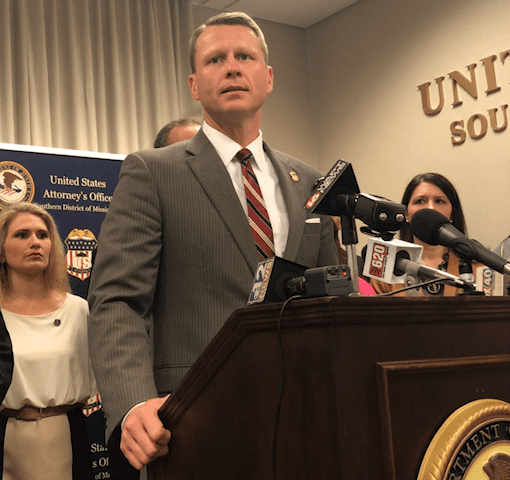
Studio portrait of Sid Salter. (photo by Beth Wynn / © Mississippi State University)
By: Sid Salter
Nationally, the demographics of America’s state legislators are far different than Mississippi’s numbers indicate, according to data available from the National Conference of State Legislatures.
Looking at all 7,383 state legislators in the U.S. state legislatures, 82.53 percent are white, 9.12 percent are African American, 4.52 percent are Hispanic, .99 percent are Asian, .85 percent are other, .41 percent are Native American, .31 percent are Hawaiian, and .2 percent are multiracial.
U.S. legislators are 71.2 percent male and 28.8 percent female in a nation that is 50.8 percent female and 48.2 percent male.
From a partisan standpoint across the nation’s 7,383 state legislators, 52 percent are Republican, 47 percent are Democrat and the remaining one percent are independent, other, or undecided. Republicans control 61 percent of state legislatures nationally while Democrats control 37 percent, one state legislature is divided, and Nebraska’s unicameral and bipartisan legislature is not included in the count.
But in Mississippi, our state’s 174 legislators at the beginning of this year were 68.97 percent white, 28.74 percent African American, and .57 percent each Hispanic, Native American and other. That’s in a state with a population – according to the U.S. Census – that is 59.1 percent white, 37.8 percent African American, 3.4 percent Hispanic, and .6 percent Native American.
Mississippi lawmakers are 85.1 percent male and 14.9 percent female in a state that is 51.5 percent female and 48.5 percent male.
From a partisan standpoint, Republicans (at the beginning of the 2019 session) controlled the Mississippi Legislature with a 72-48 margin with two vacancies in the House of Representatives and with a 33-19 margin in the State Senate.
The 2019 general election in terms of the Legislature are unlikely to significantly redistribute the partisan mathematics as Republicans appear likely to pick up at least a couple of net Senate seats. The House appears headed for no real changes to the present Republican majority.
What will be different is the legislative leadership. While there is no indication that House Speaker Philip Gunn, the Republican who succeeded Democrat Billy McCoy of Rienzi in the leadership post in 2011, doesn’t have the support to be returned to the post, that’s about the only stability in the present legislative leadership.
House Speaker Pro Tempore Greg Snowden, the Meridian Republican, was defeated in his re-election bid. There are several possible potential successors to Snowden but suffice to say new leadership is coming to that key position.
Over in the State Senate, two-term GOP Lt. Gov. Tate Reeves is running for governor while State Senate President Pro Tempore Terry C. Burton stepped down from the post early in 2019 and did not seek re-election. Veteran Sen. Grey Tollison, R-Oxford, was elected to succeed Burton – but that after he had announced his intention not to seek Senate re-election.
There will be a new lieutenant governor and a new Senate president pro tempore leading that chamber in January in addition to a successor to Snowden in the House pro tem post.
There has been significant turnover in both houses of the Mississippi Legislature, which will guarantee new faces in the committee leadership positions as well.
The marquee political matchup in the 2019 Mississippi general election is the governor’s race between Reeves and Democratic Attorney General Jim Hood. But from a governing standpoint for what will clearly be a GOP-dominated Legislature, the winner of the race for lieutenant governor between Republican Delbert Hosemann and Democrat Jay Hughes is equally impactful.











